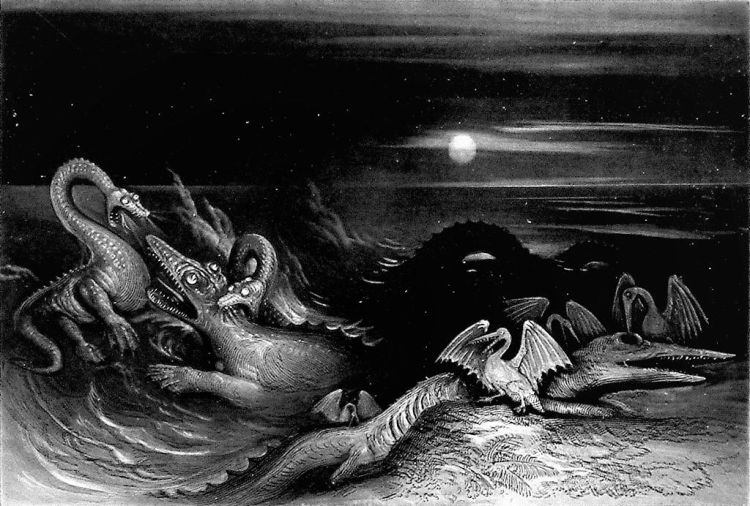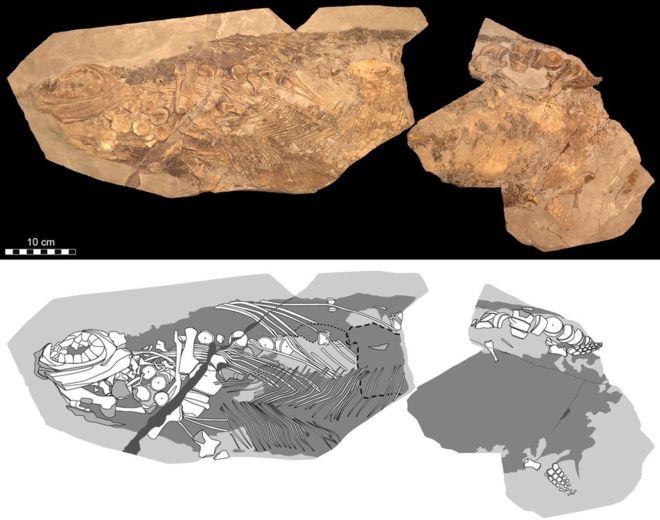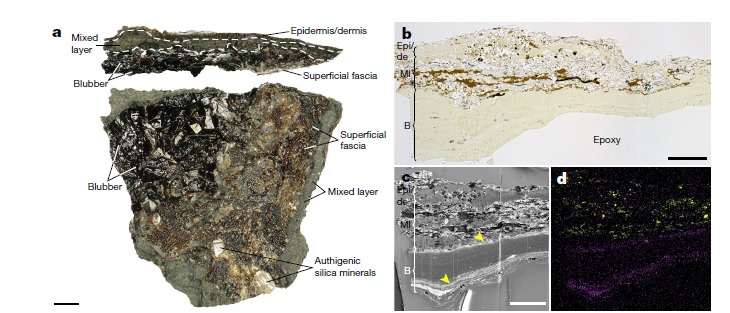
Plesiosaurus battling Temnodontosaurus (Oligostinus), front piece the Book of the Great Sea-Dragons by Thomas Hawkins.

Stenopterygius specimen from the Holzmaden quarry. Credit: Johan Lindgren
Stephen Jay Gould said that the ichthyosaur was his favourite example of convergent evolution: “Consider my candidate for the most astounding convergence of all: the ichthyosaur. This sea-going reptile with terrestrial ancestors converged so strongly on fishes that it actually evolved a dorsal fin and tail in just the right place and with just the right hydrological design. These structures are all the more remarkable because they evolved from nothing— the ancestral terrestrial reptile had no hump on its back or blade on its tail to serve as a precursor.”
During the Norian, the evolution of ichthyosaurs took a major turn, with the appearance of the clade Parvipelvia (ichthyosaurs with a small pelvic girdle). They were notably similar in appearance to extant pelagic cruisers such as odontocete whales. An exquisitely fossilized parvipelvian Stenopterygius from the Early Jurassic (Toarcian) of the Holzmaden quarry in southern Germany, indicates that their resemblance with dolphin and whales is more than skin deep.

Structure and chemistry of MH 432 blubber. From Lindgren et. al. 2018.
The specimen (MH 432; Urweltmuseum Hauff, Holzmaden, Germany) reveals endogenous cellular, sub-cellular and biomolecular constituents within relict skin and subcutaneous tissue. The external surface of the body is smooth, and was presumably comparable in life to the skin of extant cetaceans. The histological and microscopic examination of the fossil, evinced a multi-layered subsurface architecture. The approximately 100-μm-thick epidermis retains cell-like structures that are likely to represent preserved melanophores. The subcutaneous layer is over 500 μm thick, and comprises a glossy black material superimposed over a fibrous mat. The anatomical localization, chemical composition and fabric of the subcutaneous material is interpreted as fossilized blubber, a hallmark of warm-blooded marine amniotes.
References:
Lindgren, J., Sjövall, P., Thiel, V., Zheng, W., Ito, S., Wakamatsu, K., … Schweitzer, M. H. (2018). Soft-tissue evidence for homeothermy and crypsis in a Jurassic ichthyosaur. Nature. doi:10.1038/s41586-018-0775-x
Motani, R. (2005). EVOLUTION OF FISH-SHAPED REPTILES (REPTILIA: ICHTHYOPTERYGIA) IN THEIR PHYSICAL ENVIRONMENTS AND CONSTRAINTS. Annual Review of Earth and Planetary Sciences, 33(1), 395–420. doi:10.1146/annurev.earth.33.092203.1227
Pingback: Fossil Friday Roundup: December 14, 2018 | PLOS Paleo Community